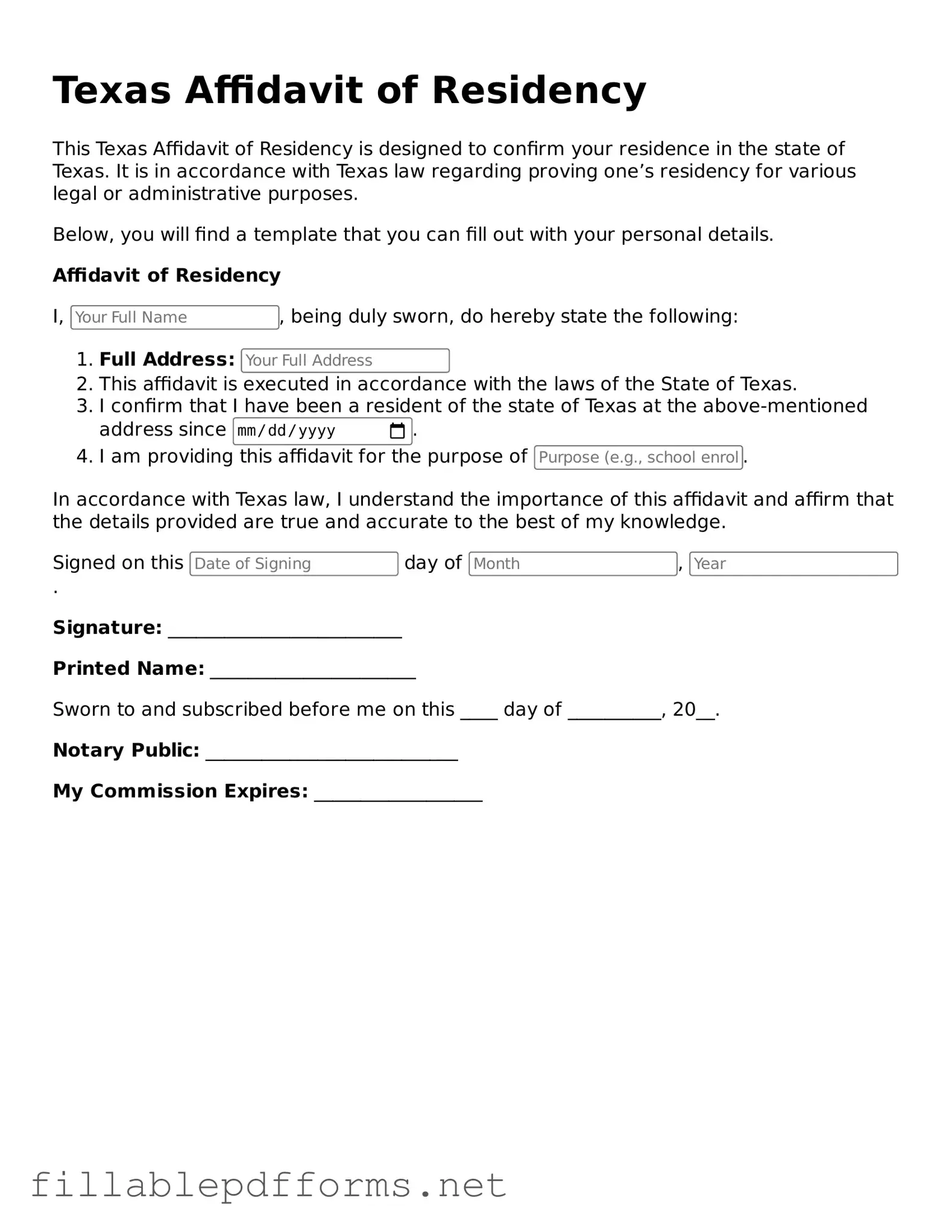The Texas Affidavit of Residency form serves as a crucial document for individuals seeking to establish their residency within the state. This form is often utilized by students, particularly those who wish to qualify for in-state tuition rates at public colleges and universities. It requires the individual to provide personal information, including their name, address, and the duration of their residency in Texas. Additionally, the form may necessitate the signature of a witness, affirming the truthfulness of the statements made. By completing this affidavit, individuals assert their commitment to residing in Texas and provide the necessary evidence to support their claims. This document not only facilitates access to educational opportunities but also plays a significant role in ensuring compliance with state regulations regarding residency. Understanding the implications and requirements of the Texas Affidavit of Residency is essential for those navigating the complexities of residency status in the Lone Star State.
